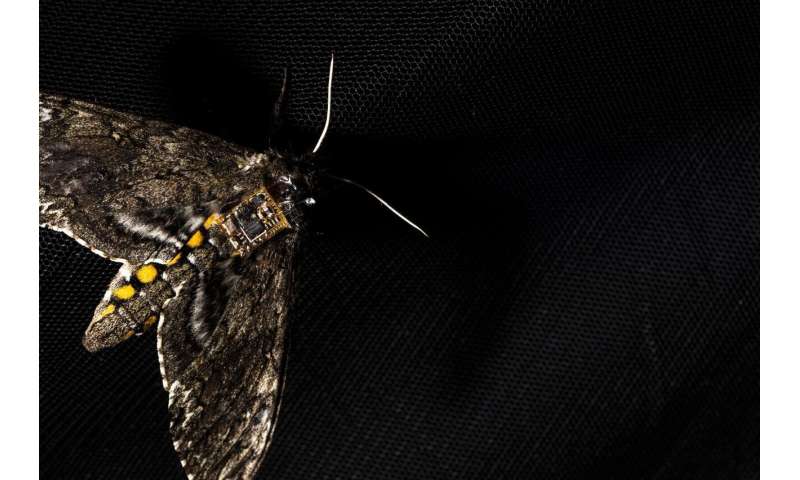TechXplore October 8, 2020
In addition to the challenges of achieving low-power consumption and long-range communication, airdropping wireless sensors is difficult because it requires the sensor to survive the impact when dropped in mid-air. Researchers at the University of Washington designed insect-scale wireless sensors that come fully integrated with an onboard power supply and a lightweight mechanical actuator to detach from the aerial platform. The 37 mg mechanical release mechanism can drop the sensor during flight, using only 450 μJ of energy as well as a wireless communication link that can transmit sensor data at 33 kbps up to 1 km. Once deployed, the 98 mg wireless sensor can run for more than 2 years transmitting 10-50 packets per hour on a 68 mg battery. They attached it to a small 28 mm wide drone and a moth and showed that the insect-scale sensors flutter as they fall, suffering no damage on impact onto a tile floor from heights of 22 m. Once a mechanism is developed to recover sensors after their batteries have died, the team expects their system could be used in a wide variety of locations, including environmentally sensitive areas. The researchers plan to replace the battery with a solar cell and automate sensor deployment in industrial settings…read more. TECHNICAL ARTICLE

…Shown here is a Manduca sexta moth with the sensor on its back. Credit: Mark Stone/University of Washington